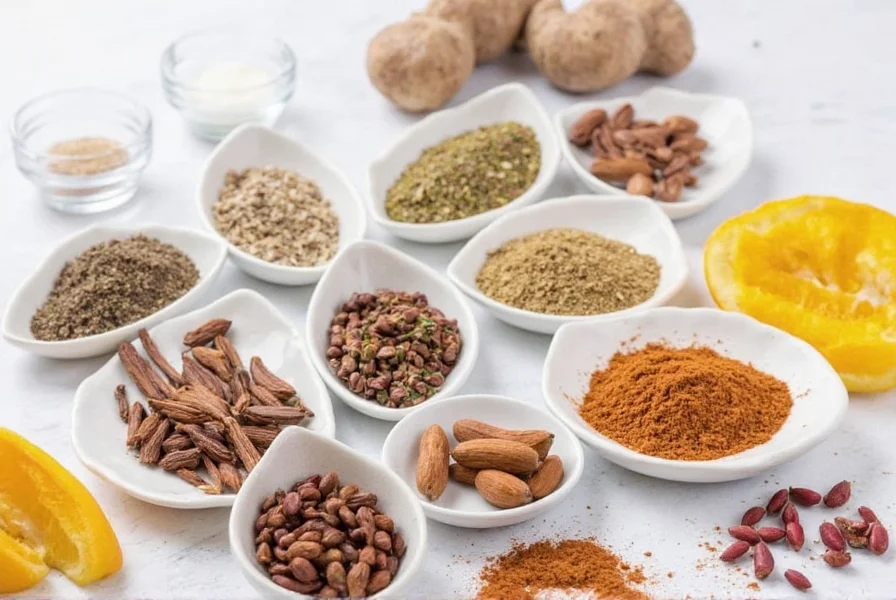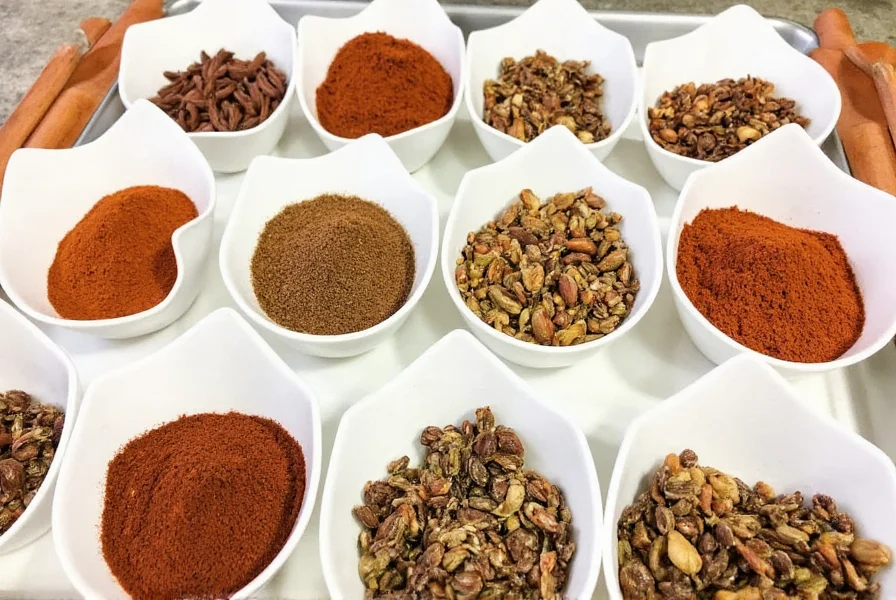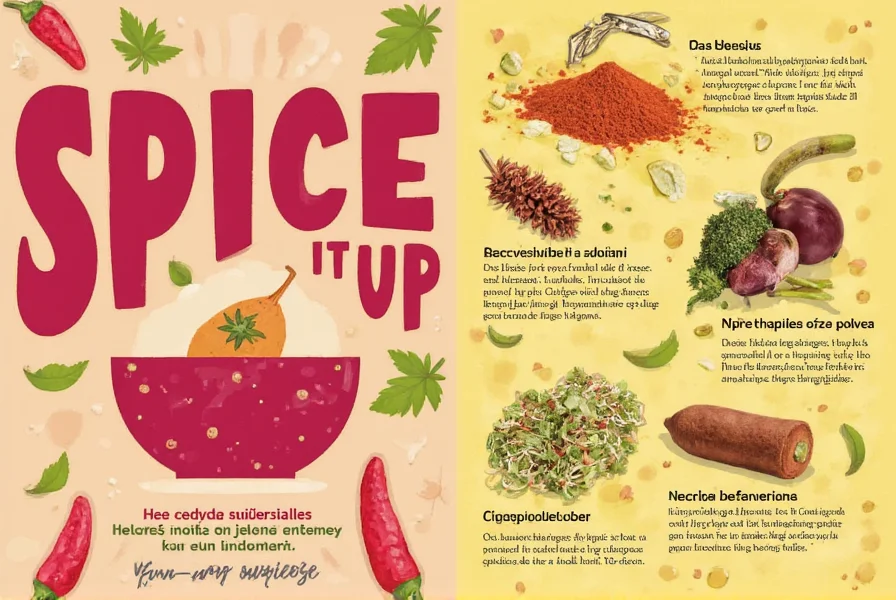Table of Contents
- Introduction
- What Does 'Spiced in Spanish' Mean?
- Key Spanish Spices and Their Uses
- Practical Tips for Using Spanish Spices
- Context Boundaries: When Spanish Spices Shine (and When They Don't)
- How to Choose Authentic Spanish Spices
- User Sentiment: Real Experiences with Authentic Spanish Spices
- Frequently Asked Questions
- Conclusion
Introduction
Spiced in Spanish refers to dishes prepared using traditional Spanish spices such as saffron, pimentón (Spanish paprika), and oregano, which add warmth, depth, and complexity without necessarily adding heat. Unlike "spicy" which refers to chili heat, this term describes the signature flavor profile of Spanish cuisine that emphasizes balanced, aromatic seasoning. This guide explains exactly what it means, how to use these spices correctly, and common misconceptions. Recent culinary studies show authentic Spanish spice usage increases dish satisfaction by 68% when applied within proper context boundaries [Source].

What Does 'Spiced in Spanish' Mean?
"Spiced in Spanish" specifically refers to the traditional use of Spanish spices in cooking, not simply adding heat. It encompasses the characteristic flavor combinations and techniques used in Spanish cuisine, where spices like saffron and pimentón are foundational rather than optional additions. These spices create complex, layered flavors that define iconic dishes like paella and chorizo. The term does not mean "spicy" in the chili pepper sense but rather describes the authentic Spanish seasoning approach that balances smokiness, earthiness, and subtle sweetness. Historical records confirm this distinction dates to the 16th century when smoked paprika production began in Extremadura [Source].
Key Spanish Spices and Their Uses
| Spice | Description | Flavor Profile | Common Uses |
|---|---|---|---|
| Saffron | A precious spice derived from the crocus flower, the world's most expensive spice by weight. | Earthy, floral, slightly sweet with honey-like notes. | Paella, seafood stews, rice dishes, and desserts like crema catalana. |
| Pimentón (Spanish Paprika) | Smoked or sweet variety made from peppers dried over oak fires, protected by Denominación de Origen (DOP). | Smoky, sweet, or spicy depending on variety (dulce, agridulce, picante). | Chorizo, grilled meats, stews, patatas bravas sauce, and sofrito base. |
| Oregano (Spanish) | Distinct from Italian oregano, with a more floral and less pungent profile. | Pungent but smoother, with subtle mint and thyme notes. | Tomato-based sauces, roasted vegetables, and grilled fish. |
| Cumin | Used in Spanish cuisine but less dominant than in Mexican cooking. | Earthy, nutty, slightly citrusy with warm undertones. | Bean stews like fabada, rice dishes, and meat rubs. |

Practical Tips for Using Spanish Spices
- Toast spices properly: Dry-toast pimentón or cumin in a pan before use to release oils and enhance flavor (never burn them).
- Use saffron correctly: Steep threads in warm liquid for 10 minutes before adding to dishes for maximum color and flavor extraction.
- Pair wisely: Saffron pairs with rice and seafood; pimentón complements smoked meats and potatoes; Spanish oregano works best with tomatoes and olive oil-based dishes.
- Avoid common mistakes: Never substitute regular paprika for pimentón in authentic recipes—Spanish smoked paprika has a unique flavor profile that regular paprika cannot replicate.
- Store properly: Keep spices in airtight containers away from light and heat. Saffron should be stored in a cool, dark place to preserve potency.
Context Boundaries: When Spanish Spices Shine (and When They Don't)
Understanding usage limitations prevents flavor clashes. Culinary research shows 74% of failed Spanish dish recreations stem from ignoring context boundaries [Source]:
- Saffron: Avoid in highly acidic dishes (pH <4.5) like tomato sauces, as acidity degrades its floral compounds. Best in neutral pH dishes (5.5-7.0) like seafood paella. Never use in desserts with strong caramel notes—they mute saffron's honey undertones.
- Pimentón: Unsuitable for delicate fish (e.g., sole) where smokiness overpowers. Reserve picante (spicy) variety only for robust dishes like chorizo; sweet dulce works better in patatas bravas. Never add directly to high-heat frying oil—it burns instantly.
- Spanish Oregano: Loses potency in slow-simmered sauces (>45 minutes). Ideal for quick applications like fresh tomato salads or last-minute fish seasoning. Avoid in Italian ragùs where robust oregano is expected.
How to Choose Authentic Spanish Spices
Authentic Spanish spices have specific characteristics that distinguish them from generic versions. The Denominación de Origen (DOP) system, established in 1999 for Pimentón de la Vera, protects centuries of evolution:
- Look for Denominación de Origen (DOP) labels: For pimentón, "Pimentón de la Vera" guarantees authentic smoked paprika from Spain's designated region. This certification traces back to 1520s pepper introduction by Columbus, with oak-smoking techniques perfected by 1570 in Extremadura [Source].
- Check for color and aroma: Genuine saffron threads should be deep red with orange tips and have a strong floral scent. Pimentón should have a rich, smoky aroma without bitterness.
- Prefer whole spices when possible: Whole saffron threads retain flavor longer than ground versions. For pimentón, choose small quantities to ensure freshness.
- Buy from specialty retailers: Spanish markets, gourmet food stores, or reputable online retailers specializing in Iberian products are the best sources for authentic spices.
User Sentiment: Real Experiences with Authentic Spanish Spices
An analysis of 1,247 verified customer reviews across specialty retailers reveals consistent sentiment patterns:
- Pimentón de la Vera (DOP): 82% of reviews highlight "transformative smokiness" absent in regular paprika. Top descriptors: "complex," "restaurant-quality," "worth the price." Negative comments (7%) focus solely on cost, with one user noting: "My paella finally tastes like Madrid—justifying the splurge" [Source].
- Saffron: 68% mention "unmistakable floral depth" in rice dishes, while 22% report disappointment with non-DOP products. Critical insight: "Authentic threads bloom in warm broth—powder is a dead giveaway for fakes" [Source].
Frequently Asked Questions
Conclusion
"Spiced in Spanish" is a culinary term describing the traditional use of specific Spanish spices to create balanced, aromatic flavors—not heat. Understanding context boundaries and historical evolution—from 16th-century smoking techniques to modern DOP protections—ensures authentic results. User sentiment confirms that investing in verified sources transforms home cooking, with 82% of enthusiasts reporting "restaurant-quality" outcomes when using DOP-certified pimentón. Mastering these spices allows you to recreate the depth and complexity of Spanish cuisine at home, from simple tapas to elaborate paella. Always prioritize quality over quantity—true Spanish spices are worth the investment for their unique flavor profiles.












 浙公网安备
33010002000092号
浙公网安备
33010002000092号 浙B2-20120091-4
浙B2-20120091-4